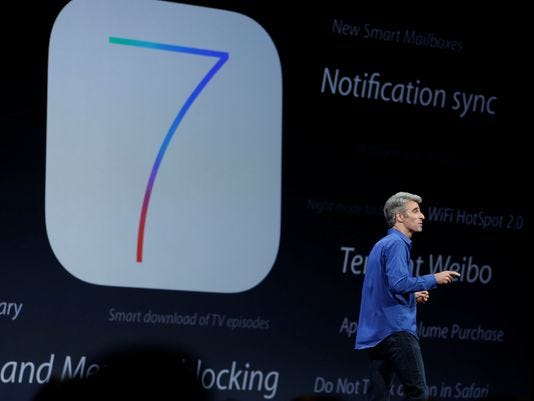Competition in the prestige car market has just been given new impetus, with Honda returning with its new Legend.
The company's flagship nameplate has been absent for two years but it has been returned with serious intent.
Honda
has lopped more than $12,000 from the price of the old model and has put
its $74,500 sedan in a competitive price and equipment position.
When it goes on sale next month, Honda will be targeting Honda Accord
buyers looking for a step up and buyers of the likes of Audi, BMW,
Lexus and Mercedes-Benz.
Honda has placed the Legend between the compact and medium-sized prestige sedans and is hoping to capture customers from both.
Honda senior director Lindsay Smalley says the Legend is a vastly-improved vehicle that will have broad appeal.
"We're confident that the Legend will appeal to consumers who are
seeking a comprehensively-equipped luxury saloon with innovative
technology, engineering excellence and performance," he says.
"These consumers are practical people who recognise value for money, who enjoy their wealth but don't need to flaunt it."
The fourth incarnation of the Legend has been cut by 40mm in length
but has grown 20mm in height and 25mm in width, with Honda claiming the
new car has a more efficient interior package than its predecessor.
Weighing in at a sizeable 1810kg – despite using cast and extruded
aluminium for much of the body and suspension components – the new
Legend uses a 3.5-litre V6 borrowed from Honda's MDX SUV.
It has been retuned to generate 217kW of power and 351Nm of torque –
an increase of 22kW and 6Nm – and delivers it via a five-speed automatic
gearbox (with manual tipshift and wheel-mounted paddles) to all four
wheels.
The Legend's all-wheel drive system offers a variable torque-split
system that can direct up to 70 per cent of the drive front or rear.
Where the Legend offers a clever addition is the electromagnetic
couplings across the rear axle, which acts like an intelligent limited
slip differential.
Depending on the prevailing driving conditions – speed, steering
angles and lateral forces – the rear differential directs drive to the
left and right wheels according to the car's requirements.
The conservatively-styled Legend sits on a double-wishbone front and
multi-link rear suspension with aluminium suspension components front
and rear to help reduce weight.
Beneath attractive 17in alloys are 320mm ventilated front discs
gripped by four-piston aluminium calipers, with the rear 310mm
ventilated discs combining with single-piston aluminium calipers.
The cabin contains plenty of leather blended with wood and aluminium.
Standard equipment includes power-adjustable leather-trimmed seats,
maple wood dash trim, LED illuminated instrumentation and electrically
reach-and-rake adjustable, leather-wrapped steering wheel with paddle
shifters.
Also on the list are cruise control, six-disc CD sound system with
MP3 and WMA capability, Active Noise Cancellation (ANC), sunroof and a
power rear window shade screen.
Honda says the Legend has a five-star NCAP crash rating and a
three-star NCAP pedestrian safety rating, thanks to a pop-up bonnet
system to reduce the severity of pedestrian head injuries.
Occupants are protected by dual front and side airbags, full-length
side curtain airbags and three-point seat belts for all seating
positions.
The Legend's climate control is linked to the GPS system, which uses
sensors to calculate the sun's position and then direct air flow to
cabin areas where it is most needed.
The ANC reduces low frequency in-cabin exhaust "boom" by using the car's audio system to counteract noise intrusion.
The first drive of the new Legend suggests it is anything but weighty, with the sedan quietly making its way through traffic.
The big body needs the V6 to have some revolutions on board before it
makes rapid forward progress but the prospect of high revs is no
problem for the Honda V6.
The cabin is spacious and comfortable, although the front seat base feels a little short for under-thigh support.
Once on the open road, the Legend settles into an easy gait, with
only a little wind noise and tyre roar on coarse grade bitumen
intruding.
The centrally-mounted display for most of the car's functions is not surrounded by cowling and suffers from sun glare.
The all-wheel-drive system is largely unnoticed in most situations,
unless you're distracted by the electronic display showing its torque
directing duties.
The grip and poise of the Legend is worthy of more expensive European machines.
Wet road tyre adhesion is good and the only drawback is the
over-assisted power steering which doesn't allow much feedback through
the wheel.
SMALL TORQUE
Honda Legend
Price: $74,500
Engine: 3.5-litre SOHC VTEC V6
Power: 217kW @ 6200rpm
Torque: 351Nm @ 5000rpm
Transmission: Five-speed automatic driving all four wheels
Brakes:
320mm ventilated discs with aluminium four-piston calipers (front);
310mm ventilated discs with one-piston aluminium calipers, with
anti-lock, electronic brakeforce distribution and emergency brake assist
systems (rear)
Dimensions: Length 4955mm, width 1845mm, height 1450mm, wheelbase 2800mm
Suspension:
Independent, double-wishbone with coil springs, dampers and stabiliser
bar (front); independent, multi-link with coil spring, dampers and
stabiliser bar (rear)
Economy: Claimed 11.8 litres/100km, tank 73 litres
Showdown in the showroom
Audi A4: 188kW/330Nm 3.2-litre all-wheel drive six-speed auto, $86,700.
Audi A6: 130kW/230Nm 2.4-litre V6, front-wheel-drive CVT auto, $80,600.
BMW 320i: 110kW/200Nm two-litre, four-cylinder, six-speed manual or auto, $74,530 (with options to match).
BMW 525i: 160kW/250Nm 2.5-litre six-cylinder, six-speed auto, $94,300.
Mercedes-Benz C200K: 120kW/240Nm 1.8-litre supercharged four-cylinder, five-speed auto, $88,895 (with options to match).
Mercedes-Benz E200: 120kW/240Nm 1.8-litre supercharged four-cylinder, five-speed auto, $82,500.
Lexus IS250 Sport Luxury: 153kW/252Nm 2.5-litre V6, six-speed auto, $78,500.
Lexus GS300: 183kW/310Nm three-litre V6,six-speed auto, $95,200.







 Porsche's racer echoes the quad LED headlight treatment found on many of its road cars.
Porsche's racer echoes the quad LED headlight treatment found on many of its road cars.




